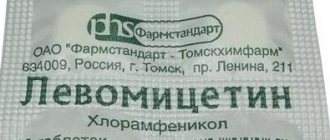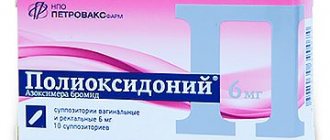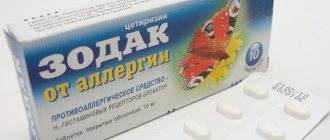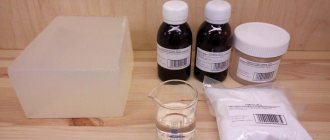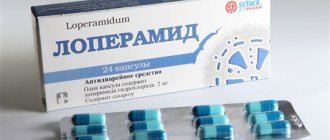Bacteria, viruses, and foreign bodies are provoking factors in the development of eye infections. The inflammatory process is always accompanied by discomfort and specific symptoms - painful itching, severe redness of the mucous membrane, lacrimation. Levomycetin eye drops are an antibacterial agent aimed at mitigating clinical manifestations and treating inflammatory infections.
Description of the drug
Antibacterial drops Levomycetin destroy pathogenic microorganisms that provoke the development of inflammatory infections in the eye mucosa. Levomycetin inhibits the activity of the most common bacteria, some forms of viruses and strains that are resistant to antibiotics such as penicillin, sulfamide, streptomycin. The product is ineffective against acid-fast bacteria, as well as protozoa and Pseudomonas aeruginosa.
general characteristics
It is produced in the form of a liquid solution, which is bottled in small bottles made of plastic or glass. Plastic containers are equipped with a special dropper for easier and more convenient use. The medicinal solution is taken from glass vials using a special pipette, which is included in the kit.
Release form
| Type of packaging and concentration of active substances | Volume, ml |
| Bottle containing 0.25% solution | 10 |
| Containing 1% solution | 25 |
| Containing 3% solution | 25 |
The drug must be stored out of the reach of young children and pets. The optimal temperature for storing eye drops is from +8 to +12 degrees. Be sure to protect the bottle with the active solution from bright sunlight and high humidity.
The shelf life of the medicine is no more than 2 years. After opening, the solution is recommended to be used within 4 weeks.
Compound
The composition of the ophthalmic product includes several active components, the leading “role” among which is chloramphenicol. The component is classified as a class of antibiotics identical to natural origin. Chloramphenicol is active against pathogenic bacteria; it disrupts protein synthesis in the cell.
When it enters the conjunctival sac, it creates an antibacterial concentration in the aqueous environment of the eye, a small amount of active components is introduced into the bloodstream.
The second active component of the drug is boric acid. It has active therapeutic properties - antibacterial, insecticidal, antifungal, therefore it is widely used to treat diseases of the organs of vision. The action of boric acid is the breakdown of proteins in pathogens at the cellular level.
In joint action, the active components of the drug stop the growth of pathogenic bacteria.
Pharmacokinetics
The solution is instilled into the conjunctival sac, and antibacterial concentrations are created in its cavity. The active solution spreads throughout almost the entire part of the eye. The active composition of the drug does not penetrate into the lens.
The therapeutic effect of the drops lasts from 1.5 to 4 hours. The period of activity of the components increases in newborns, as well as in patients with complicated renal failure.
The active composition of the ophthalmic drug is excreted in the urine. About 10% of the drug is excreted unchanged. In patients with renal failure, accumulation of inactive metabolites in small quantities may occur.
Mechanism of action of the active substance
Drops are a topical agent. This means that they work exactly where the active substance gets. The antibiotic is dripped into the conjunctival sac. The active substance is distributed throughout the cornea and mucous membranes. It does not penetrate into deeper layers, in particular the lens. The medicine is not able to penetrate the blood vessels. This suggests that it does not enter the systemic circulation. This form of antibiotic is absolutely safe for the kidneys and liver, since these organs will not be involved in removing the metabolites of the used drug. Data on the pharmacokinetics of the drug are not provided.
Pharmacodynamics
Levomycetin is usually used to destroy colonies of pathogenic microorganisms, most often bacteria, but recent studies prove that the chemical in its composition can fight viruses and fungi. This allows us to conclude that the product is multifunctional and universal.
These eye drops do not penetrate the lens
Indications
Levomycetin eye drops are used only as prescribed by an ophthalmologist. This rule is especially relevant in the treatment of eye diseases in children. Incorrectly selected dosage or indiscriminate use of the medicine can negatively affect your well-being.
Levomycetin is prescribed for the treatment of ophthalmic problems such as:
- conjunctivitis, as well as keratoconjunctivitis;
- blepharitis;
- bacterial infections;
- blepharoconjunctivitis;
- inflammation of the membrane of the edges of the eyelids;
- cornea;
- inflammation of the eyelash follicle or sebaceous eye glands of a purulent nature.
Reviews
Baby Tatiana also had conjunctivitis, and the doctor recommended using these eye drops. The result of the treatment was pleasantly surprising: the child quickly recovered, and after the course of treatment all symptoms disappeared. So there are still inexpensive and effective medications.
Application
Levomycetin antibacterial eye drops should be used strictly as prescribed by an ophthalmologist. The specialist must develop a regimen for using the medicine, which clearly indicates the dosage of the solution and the duration of the therapeutic course.
Levomycetin eye drops are an antibiotic. The medicine belongs to active solutions, therefore, if used incorrectly, significant harm will be caused to health.
During the initial visit, the patient must inform the attending physician about the presence of the following pathologies or physiological conditions:
- dry eye syndrome;
- previous conjunctivitis;
- glaucoma;
- eye injury;
- other ophthalmic agents (ointments, drops, etc.) are already used to treat the disease;
- you have had surgery or laser therapy on your eyes within the last 6 months;
- The patient uses contact lenses to correct vision.
The maximum duration of the therapeutic course is 14 days. The duration of treatment can be changed by the attending physician up or down (depending on the diagnosis and complexity of the disease).
Preparation for the procedure consists of cleansing the eyes of purulent discharge. The solution is injected into the conjunctival sac, 1 drop in each eye three times a day. The average course of treatment is 5 days (the drug must be used for the specified time, even if the person’s pathological symptoms have disappeared).
Instructions for use
When treating ophthalmological pathologies, chloramphenicol ointment is applied to the lower eyelid. Before the procedure, the eyes are washed with a weak solution of potassium permanganate. Repeat every 3 hours.
For barley, conjunctivitis, trachoma and keratitis, it is permissible to use gauze dressings up to 5 times a day.
When treating dermatological diseases, a cream or gel is applied in a thin layer to the affected area. Wounds and burns are pre-treated with an antiseptic.
Attention! The exact dosage, method of application, duration and frequency of use can only be determined by a doctor after receiving the results of all the necessary examinations! Before use, be sure to read the instructions for use of chloramphenicol ointment!
Levomycetin for children
Ophthalmological diseases of a bacterial nature are diagnosed more often in children than in adults. This is explained by the curiosity of children - from the age of 3 (and often earlier) children begin to actively explore the world. While playing, children often touch their eyes with dirty hands. This is the main reason for the development of bacterial eye infections.
When the first symptoms of a viral or bacterial eye infection appear, the child should immediately see a doctor. Parents should know that the earlier treatment begins, the faster the pathogenic process can be cured. The “signal” for contacting an ophthalmologist should be the following physiological changes in a child - redness of the mucous membrane of the eyes, increased lacrimation, itching, and the formation of pustules.
For the treatment of ophthalmological diseases, children are prescribed eye drops. Antibacterial drops, which include Levomycetin, are indicated for eye diseases of a bacterial nature. The active composition of the drug fights pathogenic microflora, reducing the intensity of clinical manifestations.
“Children's” eye drops have a lower concentration of active ingredients. For the treatment of ophthalmic diseases in children, Levomycetin is used with a concentration of active components of 0.25%. The duration of therapy is approximately 7 days (if necessary, the doctor can extend up to 14 days).
special instructions
The effect of Levomycetin on children has not been studied enough, so this drug is prescribed only in extreme cases, and it is necessary to make sure that the child is not allergic to the components of the drug.
When using the drug on children under 3 years of age, it is very important to monitor the child’s condition, since the risk of “gray child” syndrome increases, which is very dangerous. The functionality of the kidneys is impaired, this leads to enzyme deficiency; general poisoning of the body can provoke damage to the heart and blood vessels. The child’s body cannot process and remove toxic substances, as a result of which the baby’s skin turns gray, body temperature drops, and respiratory function is impaired.
Do not exceed the dosage and duration of treatment prescribed by your doctor. If atypical symptoms develop, you should immediately consult a doctor.
Possible side effects
Antibacterial eye drops are well tolerated by patients. Side effects are rare. The reason for contacting a doctor should be the following physiological changes that are observed after instillation of an antibacterial agent:
- prolonged visual impairment (if blurred or cloudy vision is observed for more than 2 hours after the therapeutic procedure);
- sharp and acute pain in the eyelids and eyes;
- clouding of the whites of the eyes;
- change in the shape of the pupil (becomes abnormally narrow or, conversely, wide);
- a feeling of the presence of a foreign body in the eye, which is accompanied by redness, itching, pain, and general discomfort.
Overdose
Accidental or intentional ingestion of a medicinal solution can cause toxic poisoning due to the content of active substances in the drug - boric acid and chloramphenicol.
When instilled into the conjunctival sac in a large dosage, the solution will provoke redness and burning of the eye mucosa. First aid consists of emergency rinsing (the duration of the procedure is at least 15 minutes) of the affected eye with a large amount of cool water. If painful symptoms persist after washing the eye, you should immediately consult an ophthalmologist.
What is Levomycetin
The drug is a local antibiotic used in therapy against inflammatory processes of a bacterial nature. Levomycetin solution for the eyes is prescribed for infections that manifest themselves in the conjunctiva or cornea. Ophthalmologists successfully treat inflammation of the deep structures of the eyeball with it. A feature of the medication is the body’s slow adaptation to its components.
Compound
The active ingredient in chloramphenicol eye drops is chloramphenicol. There are 2.5 mg of this element per 1 ml of liquid. The auxiliary ingredients are boric acid and distilled water. The standard form of release of the drug is a plastic or glass bottle of 5 or 10 ml with a convenient dropper. Levomycetin is stored in a dry, dark place at a temperature not exceeding 15 degrees Celsius. The shelf life of a closed bottle is 2 years; after opening, the medicine can be used for no more than 1 month.
How it works
Eye drops with Levomycetin have long been used in medicine as a way to quickly and safely get rid of pathogenic microorganisms. The wide range of the drug is explained by the ability of chloramphenicol to interfere with the synthesis of proteins of eye microbes. The active element successfully fights gram-positive cocci and some gram-negative pathogenic bacteria (salmonella, klebsiella, hemophilus influenzae, Escherichia coli, spirochete). A pronounced bacteriostatic effect helps treat inflammation of the cornea.
If the ophthalmologist prescribed Levomycetin, the eye drops will immediately begin to affect the microflora of the eye. The mixture is destructive for strains that are not afraid of penicillin, streptomycin, and sulfonamide. However, the antibiotic is not capable of fighting viruses, fungal pathogens, acid-fast bacteria and protozoa. After instillation of the eye drug Levomycetin, a high concentration of components is observed in the cornea and vitreous body. Penetration of the substance into the lens does not occur.
- Intracranial pressure
- Thuja oil
- Panthenol cream
Interactions with drugs
The simultaneous use of Levomycetin and drugs that inhibit hematopoiesis (cytostatics, sulfonamides) can provoke metabolic disorders in the liver.
The simultaneous use of antibacterial eye drops and drugs such as Erythromycin, Lincomycin, Clindamycin weakens the therapeutic effect.
The use of Levomycetin simultaneously with antibacterial drugs (penicillins and cephalosporins) reduces the ability of the latter.
The combined use of antibacterial eye drops and oral hypoglycemic drugs enhances the effect of the latter and increases their concentration in plasma.
Chloramphenicol, with the simultaneous use of indirect anticoagulants and phenobarbital, provokes a weakening of the metabolism of the latter. This leads to a slowdown in the process of removing active components and their accumulation in the plasma.
Treatment with eye drops immediately after radiation therapy increases the risk of side effects.
General information about the drug
Levomycetin is a broad-spectrum antibiotic. The active ingredient is chloramphenicol. It copes well with infections that affect various eye structures. Both gram-negative and gram-positive infectious pathogens, as well as some viruses, are sensitive to this product.
The drug has a bacteriostatic effect - it negatively affects the growth and reproduction of infection. However, it turns out to be ineffective against protozoa, acid-fast microorganisms, as well as Pseudomonas aeruginosa.
Addiction to Levomycetin develops extremely slowly.
Despite the fact that the drops are intended for local treatment, a certain amount of the drug penetrates into the systemic bloodstream.
Precautionary measures
The use of Levomycetin eye drops is allowed only as prescribed by a doctor. The ophthalmologist selects the dosage of the medication for the patient and prescribes a course of treatment. The use of antibacterial eye drops for a long time is unacceptable, as this increases the risk of developing hypersensitivity or the appearance of microorganisms resistant to the active components of the product.
Levomycetin eye drops contain boric acid. This component can cause toxic reactions in the body. Another active component of ophthalmic drops, chloramphenicol, can also provoke toxic reactions in the body. Before using a drug, it is important to assess the likelihood of side effects and the actual therapeutic benefit. In medical practice, there are cases where inappropriate or incorrect use of Levomycetin drops provoked the development of brain hyperplasia.
In case of long-term use of drops, it is recommended to periodically monitor changes occurring in the body. An indicator of possible changes is the result of a blood test. A patient who is preparing for long-term therapy with antibacterial ophthalmic drops must have a blood test before starting treatment.
Levomycetin eye drops are prescribed with caution to patients who have previously been exposed to radiation therapy, as well as to those who are treated with cytotoxic drugs.
When treating with Levomycetin drops, you should not wear contact lenses. The use of soft contact lenses is permitted 24 hours after completion of the course of antibiotic therapy.
An ophthalmic drug, when instilled into the conjunctival sac, almost always provokes a change in the clarity and brightness of vision. After the therapeutic procedure, you should not drive a vehicle for 2 hours. During this same time, it is not recommended to perform monotonous and painstaking work.
Contraindications for use and side effects of the drug
Eye drops may be contraindicated in patients who have hypersensitivity to this drug or to similar drugs from the group of chloramphenicol.
The antibiotic has contraindications for patients suffering from the following diseases:
- psoriasis,
- various eczemas,
- infectious fungal skin diseases.
Diseases of patients for which antibiotic use is prohibited:
- pronounced suppressed bone marrow hematopoiesis;
- during the period of acute porphyria;
- observation of glucose deficiency;
- kidney, liver diseases;
- children under 2 years of age;
- patients treated with radiation therapy;
- patients who take cytotoxic drugs.
Can chloramphenicol drops be used for children and pregnant women?
During pregnancy and lactation, you need to be especially careful when using any medications. For the simple reason that some of them are excreted in breast milk and naturally enter the baby’s body, which can subsequently cause an adverse reaction in the child.
Article on the topic: What are the most beautiful eyes in the world for women and men?
Therefore, doctors do not recommend chloramphenicol to nursing mothers.
Chloramphenicol, which is part of the drops, has the ability to pass through the placenta and there is a possibility of it entering the embryo’s body, which is unsafe for the development of the child in the womb.
It is not recommended to prescribe chloramphenicol to pregnant women and breastfeeding mothers. Also for children under 4 months. Prescribe drops with caution to patients working with dangerous mechanical devices and vehicle drivers.
When conducting research on animal organisms, it was noticed that chloramphenicol has toxic and teratogenic properties that are dangerous for embryos. Since the complete safety of chloramphenicol eye drops has not been established, their use during pregnancy is completely contraindicated.
Levomycetin drops for children
Eye drops are allowed to be used by children only after two years of age. The course of treatment and dosage is prescribed to each child individually by the attending doctor. In case of particularly severe eye disease in a child, the drug may be used by children under two years of age, but only under the supervision of a doctor.
For children under one year of age, the drug is recommended only if there is no other way to treat the infection. Recommended dose of eye drops for children: up to one year - 1 drop of medicine 3 times a day. The drug begins to act two hours after use.
The recommended course of treatment with chloramphenicol is 2 weeks. It is not recommended to use it for more than two weeks.
How to properly apply eye drops to children:
- Shake the bottle of medicine well;
- Use a clean pipette to collect drops;
- Carefully tilt the child's head back and pull the lower eyelid down (before the procedure, the hands must be treated with hygiene products);
- Drops should be instilled into the conjunctivital sac of the eye (carefully place the pipette over the child’s eyes, then drop one drop of the drug);
- Place your index finger on your eye, press down a little, repeat several times. Instillation using this method allows the medicine to stay longer in the child’s eye.
If a child has an infection in only one eye, during treatment it is necessary to instill in the other eye! In order to prevent the viral disease from spreading to the other eye (especially with conjunctivitis, keratoconjunctivitis, etc.)
Contraindications for this medicine in children
Typically, the antibiotic chloramphenicol does not have obvious side effects.
Only a small number of children with hypersensitivity may experience an allergic reaction to the components of the medicine containing:
- skin rashes;
- itching;
- irritability of the eyes, excessive tearing of the eyes.
With long-term use of the drug, unwanted negative changes in hematopoiesis may occur. Danger of repeated fungal infection.
If the above symptoms are detected, you must immediately stop taking the medicine. Carefully monitor the dosage of the drug.
An overdose of an antibiotic can cause the following disorders:
- slowing down kidney function;
- cause enzyme deficiency;
- acquisition of gray skin color;
- respiratory disease;
- vomiting and other undesirable consequences.
For these reasons, the medicine should not be prescribed to children themselves. It is necessary to consult a doctor and use the drug only after his recommendations. If an antibiotic overdose suddenly occurs, immediately rinse your eyes with plenty of running water and go to the clinic.
Contraindications
Antibacterial drops Levomycetin have the following contraindications:
- The presence of dermatological and fungal skin diseases.
- Individual intolerance.
- Hypersensitivity to the active composition of the drug.
- Pregnancy.
- Lactation period.
- Child's age is up to 4 months.
The drug is recognized as an effective antibacterial agent against many ophthalmic problems. But you can use Levomycetin only as prescribed by a doctor.
Analogues of the drug
Analogs of Levomycetin are:
- Sintomycin;
- Normax;
- Phloxal;
- Sulfacyl sodium.
Article on the topic: Can Miramistin be used for the eyes?
Syntomycin ointment Normax Floxal Sulfacyl-Sodium
A little about analogues:
- Floxal eye drops contain ofloxacin, which is characterized as a strong antibacterial agent and effectively fights various viral diseases: conjunctivitis, corneal ulcers, keratitis, etc. It is allowed for the treatment of children after a doctor’s prescription;
- Sulfacyl sodium - used in ophthalmic practice . It is completely safe for the eye body. Helps stop the development of viral bacteria. It has the properties to increase and strengthen the immune system in the fight against infections.
pharmachologic effect
Levomycetin drops are prescribed for infectious eye inflammations provoked by the presence of viruses and bacteria sensitive to chloramphenicol. Effectively used in the treatment of conjunctivitis, keratitis and keratoconjunctivitis. Blepharitis is also a disease for which chloramphenicol drops are suitable for treatment. But the instructions specifically clarify that the aqueous composition of chloramphentcol can be successfully used both for the treatment process and for the prevention of eye diseases of this kind.
Adverse reactions and contraindications
Often, if the use of Levomycetin drops was carried out correctly, no side effects are observed. However, when the drug is used in parallel with other drugs that inhibit hematopoiesis, the patient may experience:
- active tearing;
- itching in the eyes and eyelids;
- redness in the conjunctival area;
- secondary fungal infection.
If such adverse reactions occur, specialists replace the drug with an analogue one.
Contraindications to therapy:
- hypersensitivity to the components of the drug;
- kidney and liver failure;
- violation of hematopoietic function;
- period of bearing a baby;
- breast-feeding;
- eczema.
Medicine "Monural"
This antibiotic is most often prescribed for bacterial cystitis. It is also used for postoperative UTIs, asymptomatic massive bacteriuria (including in pregnant women), and urethritis. Unlike Levomycetin, this drug is not prescribed to children under 5 years of age. It is also prohibited to take it in case of severe renal failure. Its side effects are diarrhea, vomiting, heartburn.
Analogue of "Levomycetin" "Roxithromycin"
This medicine is available in the market in tablet form. They replace Levomycetin most often if the disease is caused by the microorganisms Ureaplasma urealyticum or Chlamydia trachomatis. For porphyria, it is not used as an analogue to this drug. This medicine should not be used during pregnancy.
The standard dose of the drug "Roxithromycin" ("Roxide") per day is 300 mg. Take it twice a day, 150 mg with an interval of 12 hours. In case of renal and liver failure, you can take this medicine, but in a dose reduced by half. Its side effects are nausea, diarrhea (sometimes with blood), hepatitis, headache, hearing loss, candidiasis.
Levomycytin eye drops drug characteristics
The active substance - chloramphenicol - is part of a group of antibiotics that suppress the action of gram-positive and gram-negative bacteria, and, notably, has an effect on those microorganisms that are sensitive to tetracycline, penicillin and sulfanilamide. Accustoming to this antibiotic occurs slowly, as a result of which it can be included in a long therapeutic course. The proportion of the substance per 1 ml of solution is 25 mg.
Despite external use, chloramphenicol has the ability to partially penetrate into the blood, as a result of which there are a number of precautions when using eye drops. Side effects are especially active in people using drugs that suppress blood flow and affect the number of white blood cells.
The penetration of the substance into the crystal of the eye has not been recorded: the concentration increases only in the cornea and iris, as well as in the vitreous body.
Indications for the use of Levomycytin eye drops are any bacterial lesions of the mucous membrane, in particular:
- Conjunctivitis;
- Blepharitis;
- Keratitis.
In addition, they can also be used to treat a runny nose - eye drops can be used in the nasal passages.
At the same time, doctors focus the attention of patients on the fact that Levomycytin drops may be absolutely ineffective if used to restore the eyes after surgery, since they do not have similar properties. Their direct task is to disinfect and destroy pathogenic bacteria
Analogs
Levomycetin in the form of eye drops is a drug in liquid form intended for local therapy. It is instilled onto the mucous surface of the eyeball. After a few seconds, the active substance is absorbed into the deeper internal tissues and the therapeutic effect begins. To achieve recovery, you need to periodically drip the solution, avoiding long breaks. The regimen, three or four times a day, is the most suitable. Otherwise, blinking and tears will wash away the healing solution from the surface of the eye.
Analogues of chloramphenicol eye drops are eye gels, ointments, films with antibiotics, placed in the eye at night:
- Tetracycline ointment.
- Levomycetin ointment.
- Erythromycin ointment.
- Gel Solcoseryl.
- Therapeutic films with albucid.
LiveJournal
Composition and release forms
Actually, “Levomycetin” itself can be supplied to pharmacies and medical institutions in different forms, in the form of:
- tablets and capsules;
- ointments;
- alcohol solution;
- extended-release tablets;
- eye drops.
Thus, for various types of bacterial diseases it is very convenient to use Levomycetin. Its analogues are usually available only in tablets and powders. The main active ingredient of this medicine is chloramphenicol. This antibiotic belongs to the amphenicol group.
What does the ointment help with: indications for use
The main effect of using this antibiotic is antibacterial; it destroys pathogenic and conditionally pathogenic microorganisms that have entered the human body. Thus, the inflammatory process is stopped and the disease that arose due to an infection sensitive to chloramphenicol goes away due to the elimination of its root cause. The drug is produced in different forms in order to effectively act on problems localized in different parts and organs of the human body, but regardless of the type, the antibiotic can cope with:
- coli;
- salmonella;
- staphylococci and streptococci;
- Proteus;
- chlamydia;
- treponema;
- shigella;
- leptospira, etc.
It is worth noting that the drug cannot fight the causative agent of tuberculosis, clostridium, Enterobacter, Pseudomonas aeruginosa and fungi.
An important advantage of the product is that resistance to it in bacteria develops extremely slowly, and therefore it can be used for a long time and effectively. Levomycetin ointment is used to combat bacterial lesions on the surface of the skin, namely: for infected burns of varying degrees, bedsores, open and superficial wounds, obvious trophic ulcers. The product can be used if a nursing woman has cracked nipples. Eye ointment also has a good effect on other bacterial infections of the eye mucosa.
